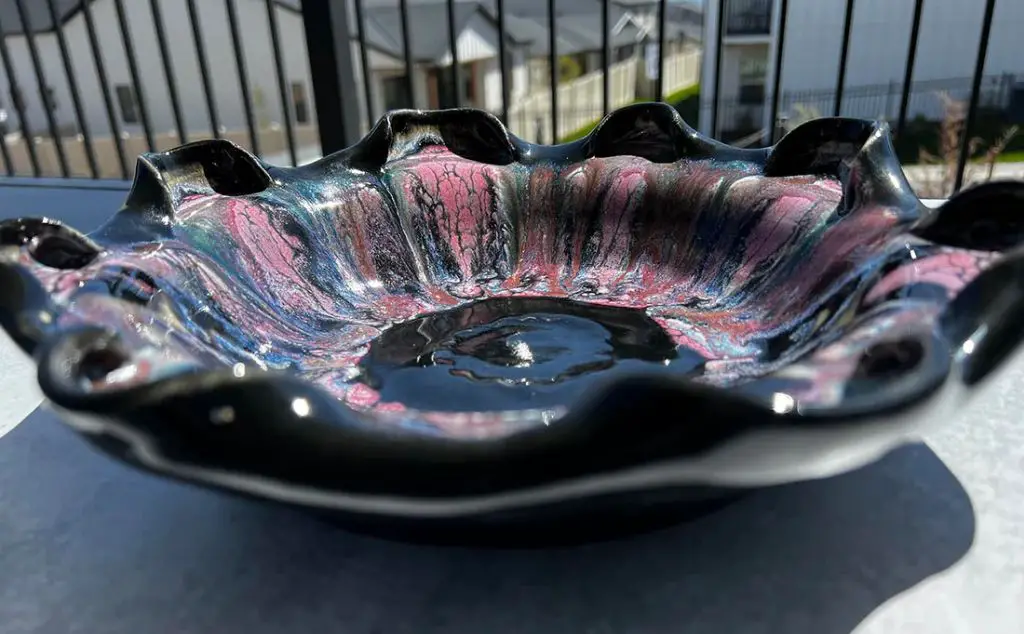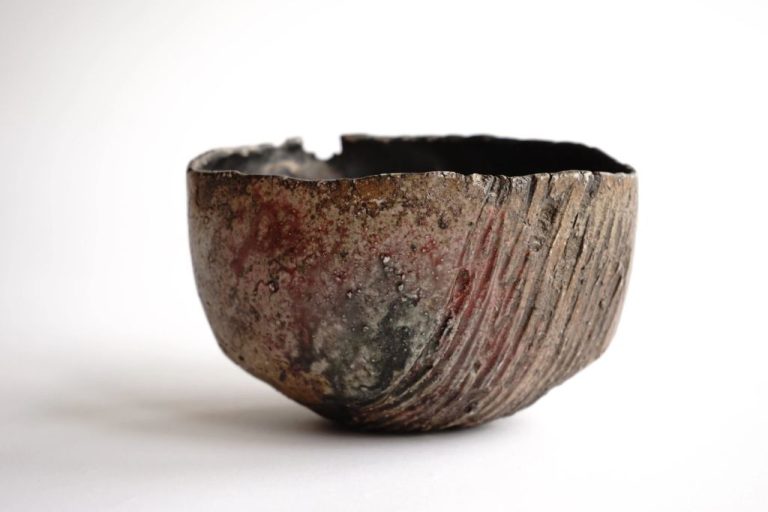How Many Layers Of Amaco Glaze?
AMACO glaze is a popular brand of pottery glaze manufactured by American Art Clay Co. AMACO offers a wide range of glazes that fire at various temperatures, including low-fire glazes for cone 06 firing and mid-range glazes for cone 5-6 firing. AMACO glazes are known for their vibrancy and reliability. Many potters appreciate AMACO glaze for its consistent results and limitless options for mixing and layering glazes. With proper preparation and firing, AMACO glazes produce stunning effects on ceramic pieces.
What is AMACO Glaze?
AMACO glaze is a popular brand of ceramic glaze manufactured by American Art Clay Co. It comes in a variety of series for different temperature ranges. The F series is a lead-free glaze line that fires between cone 05-6 and is food-safe, making it good for functional pottery (source).
AMACO glazes are made from a mixture of silica, fluxes, and colorants. The silica, often in the form of clay, forms the glassy coating when fired. Fluxes like calcium, sodium, potassium, and lithium lower the melting point of the glaze. Colorants like metal oxides and stains provide the color and effects. The specific composition creates the properties of each AMACO glaze variation (source).
Recommended Number of Layers
The manufacturer Amaco recommends using 2-3 layers of glaze for most applications. According to the Amaco YouTube channel, 2 layers of glaze tends to work well for brighter colors while 3 layers helps deepen and saturate the colors (Layering AMACO dipping glazes). For specific glazes like Amaco’s Velvet underglazes, 1-2 coats are recommended depending on the desired effect.
In general, Amaco suggests experimenting with layering their glazes, starting with 2 layers and adding additional coats if a more saturated result is desired. Their products are designed to be mixed and layered for unique effects. According to the Amaco website’s product descriptions, combinations of 3-5 layers tend to produce the best results for their dipping glazes.
Factors that Determine Layers Needed
There are several key factors that determine how many layers of AMACO glaze an artist needs to achieve their desired effects:
The type of clay body is important. Porcelain clay bodies, for example, require less glaze thickness and fewer layers compared to stoneware or earthenware. This is because porcelain naturally has a finer texture and vitrifies at lower temperatures, allowing glazes to fuse well with thinner applications. Stoneware and earthenware may need multiple layers to build up opacity and vibrancy of color.
The intended firing temperature makes a difference. Glazes fired to higher temperatures like cone 6 often require fewer layers, as the glaze flows and melts more fully at hotter temps. For lower temperature firings like cone 04-05, more layers help the glaze attain an even coating. The number of layers can also affect how well glazes interact and blend during firing.
The desired effects play a role too. Special techniques like mottling or bleeding colors may need several layered glazes. But too many thick glaze layers can also cause crawling or pinholing. Simple opaque coverage may only require 1-2 layers over the clay body. More complex patterns, textures, and color interactions necessitate additional layered glazes.
Testing on sample tiles is recommended to determine the ideal layers and combinations for each clay, glaze, and firing method.
1 Layer

Using only a single layer of AMACO glaze is appropriate in certain situations (Glaze Layering, n.d.). For example, some glazes like AMACO’s PC-20 Cobalt offer striking results with a single thick application. A single layer highlights the glaze’s natural colors and textures. Additionally, certain techniques like sgraffito are best achieved by scratching through a single layer of glaze to reveal the bare clay body underneath. Using just one glaze layer allows the exposed clay to provide dramatic contrast. Finally, beginners may want to start with single layer pieces to learn how different AMACO glazes behave before attempting more complex multi-layered effects.
2-3 Layers
According to Amaco (https://amaco.com/resources/layering), applying 2-3 layers of glaze is ideal for achieving more complex effects and depth. The key benefits of using multiple glaze layers include:
- Creating color variations – Adding layers of different colored glazes results in new shades and blends.
- Increasing texture – Extra layers build up thickness and interest.
- Achieving more complex reactions – Certain glazes interact uniquely when layered, like crackles, pearlescence, and breaking.
- Deepening effects – Additional transparent layers intensify and enhance underlying colors and surfaces.
- Masking – Multiple coats can obscure undesirable underglaze colors or base clay colors.
Proper layering techniques are important for achieving the desired results. Glazes with similar melting temperatures work best layered together. It’s also important to allow each layer to completely dry before adding the next coat according to manufacturer recommendations.
4+ Layers
Using 4 or more layers of AMACO glaze can create stunning visual effects, but it requires careful planning and technique (AMACO). Heavy layering is useful for:
- Creating depth and dimension – Multiple layers give the finished surface visual complexity.
- Achieving specialty effects – Techniques like reticulation require 4-6 layers to get the cracked texture.
- Building vibrant colors – Layering deep colors like blues and purples gives an incredible saturated result.
- Obscuring the clay body – With 4+ coats, the color of the clay underneath will be completely hidden.
The number of layers needed depends on the opacity of the glaze. More transparent glazes like AMACO’s Iridescents may need extra coats to get full coverage (AMACO). Always test layers on a sample tile first to achieve the desired effect.
Layering Techniques
Proper layering technique is crucial for achieving beautiful results when using multiple layers of glaze. Here are some tips for smooth, even layering:
Apply thinner coats when layering multiple glazes. Thick layers can cause crawling or cracking. Aim for the thickness of heavy cream (citing Amaco).
Allow each layer to completely dry before adding the next. This prevents muddying or bleeding between layers. Drying time depends on glaze thickness and environment – often 10-15 minutes between coats (citing Pinterest).
Lightly sand any gritty areas between coats to ensure proper adhesion. Be careful not to scratch through to the base layer.
Work from lightest colors to darkest when layering. This prevents the lighter glazes from getting lost under darker ones.
Overlap layers slightly to blend and avoid distinct seams between colors. Soft blends create visually appealing results.
Aim your spray gun, pour, or brush strokes in the same direction for each layer. This creates uniform textures and patterns.
Let creativity guide you, but follow basics like viscosity, compatibility, and firing requirements when choosing layering combinations. Test pieces first.
Special Effects with Layering
Layering glazes can create some interesting special effects like crazing, cracking, and peeling. According to Amaco, crazing occurs when the upper glaze layer shrinks more than the lower glaze during cooling and contracts, causing a network of fine cracks. Cracking happens when glazes with different expansion rates are layered, leading to cracking as the piece cools. Peeling effects can occur when an upper glaze layer does not bond well to the layer below it and peels off during firing.
To achieve crazing, try layering a high-expansion glaze like Raku over a lower-expansion glaze like a satin matte. For cracking effects, layer two glazes with very different expansion rates, such as a high-fire over a low-fire glaze. Peeling effects can result from layering a thick, high-viscosity glaze over a thinner glaze.
When deliberately trying to achieve special effects through layering, be sure to test compatibility on test tiles first. Effects like crazing, cracking and peeling are unpredictable and take some experimentation to perfect.
Conclusion
The recommended number of AMACO glaze layers depends on the type of glaze and the desired effects. For simple opaque glazes, 1-2 layers are often sufficient to achieve full coverage and color intensity. More translucent glazes may require 2-4 layers to build up a rich color. Special techniques like texturing and adding depth effects may also utilize multiple layers. The main factors in determining layering are the glaze type, the color and coverage you want, and any artistic effects you aim to achieve. With careful experimenting and layering, AMACO glazes can produce a wide range of beautiful ceramic finishes. The key is taking the time to test out different layering techniques and finding what works best for your project.


